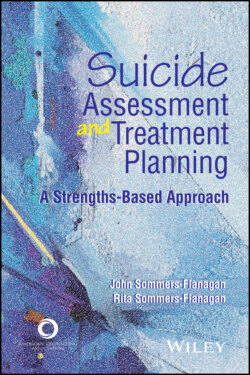Читать книгу Suicide Assessment and Treatment Planning - John Sommers-Flanagan - Страница 60
Boundary Setting and Tending
ОглавлениеProfessional boundaries are a part of all counseling. Appropriate boundaries help clarify the nature of your relationship and aid in establishing and maintaining therapeutic relationships. This is especially true when you are working with clients who may be suicidal. When regularly working with suicidality you might become more easily burned out, your judgment may become impaired, your buttons may get pushed, and in general you may feel increased vulnerability.
Clear boundary setting protects counselors and clients. Boundaries define the parameters of the professional relationship and model clarity, safety, and compassion. The hard truth for all mental health professionals is this: We cannot save people from pain or prevent them from making destructive choices. We can work with people to make changes in their lives—changes that reduce pain and increase joy, changes that may begin a positive momentum—but there are limits, and these limits should be carefully described and observed (see Case Vignettes 2.1 and 2.2).
The Lily and Brian scenario in Case Vignette 2.1 may seem extreme, but in our years of teaching, supervising, and working with difficult populations, we have seen similar (and worse) boundary extensions or breaks (R. Sommers-Flanagan et al., 1998). In telebehavioral health scenarios involving suicidality, you may get many requests to provide immediate assistance via text or telephone. If you respond to such requests with anything that can be construed as providing counseling, you have broken a boundary and begun counseling without establishing informed consent. Whenever clients are suicidal, the temptation to break professional boundaries can be powerful.
Specific circumstances or job demands may require you to give clients your cell phone number or email address, but beware of the implicit messages that accompany this boundary extension. You become responsible for whatever information is communicated through these channels. What are your boundaries for the number of calls a day, or the number of minutes for each call, or the number and length of emails or texts you are willing to read and respond to? Setting and maintaining nuanced boundaries can become slippery. We cannot tell you exactly which boundaries to set, because professional and community norms vary. Our best guidance is for you to consult, read your professional ethics codes, contemplate, and consult again. One more guideline: If you are reluctant to openly consult with colleagues about how you are handling boundaries with clients, then you should probably consult with your colleagues.
